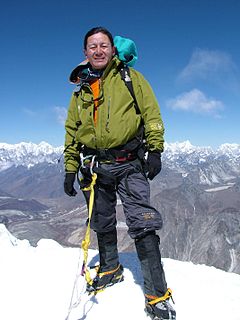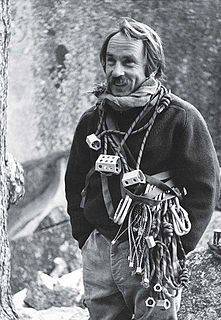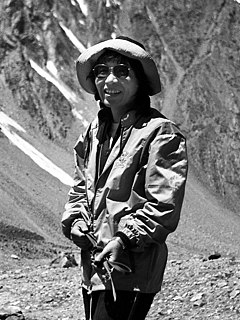A Quote by Jamling Tenzing Norgay
In the mountains, worldly attachments are left behind, and in the absence of material distractions, we are opened up to spiritual thought. We should be attempting to carry the spiritual experience of the mountains with us everywhere.
Related Quotes
Before practicing meditation, we see that mountains are mountains. When we start to practice, we see that mountains are no longer mountains. After practicing a while, we see that mountains are again mountains. Now the mountains are very free. Our mind is still with the mountains, but it is no longer bound to anything.
There is only one basic desire that motivates the spiritual seeker-to make the experience of God, of divine bliss and joy, the center of the life experience. We are spiritual beings living in a material universe, and as such, our first priority is to nurture that eternal part of us. The eleventh step of AA's twelve-step program states it beautifully: "Sought through prayer and meditation to improve our conscious contact with God as we understood him, praying only for knowledge of his will for us and the power to carry that out."
The famous Zen parable about the master for whom, before his studies, mountains were only mountains, but during his studies mountains were no longer mountains, and afterward mountains were again mountains could be interpreted as an alleory about [the perpetual paradox that when one is closest to a destination one is also the farthest).
Why do people think the spiritual life demands withdrawal from the ordinary? Because they've been taught, at least by implication, that the physical is a block to the spiritual. When we assume that the spiritual, unlike the physical, is impervious to corrosion, then we assume that all things material are not to be honored. But the fact of the matter is, the material is the vehicle of the spiritual.
Before I had studied Zen for thirty years,
I saw mountains as mountains,
and waters as waters.
When I arrived at a more intimate knowledge, I came to the point where I saw that mountains are not mountains,
and waters are not waters.
But now that I have got its very substance
I am at rest.
For it's just that
I see mountains once again as mountains,
and waters once again as waters.
You can solo-climb Everest without using oxygen or you can pay guides and Sherpas to carry your loads, put ladders across crevasses, lay in 6,000 feet of fixed ropes, and have one Sherpa pulling you and another pushing you. ... The goal of climbing big, dangerous mountains should be to attain some sort of spiritual and personal growth, but this won't happen if you compromise away the entire process.





























